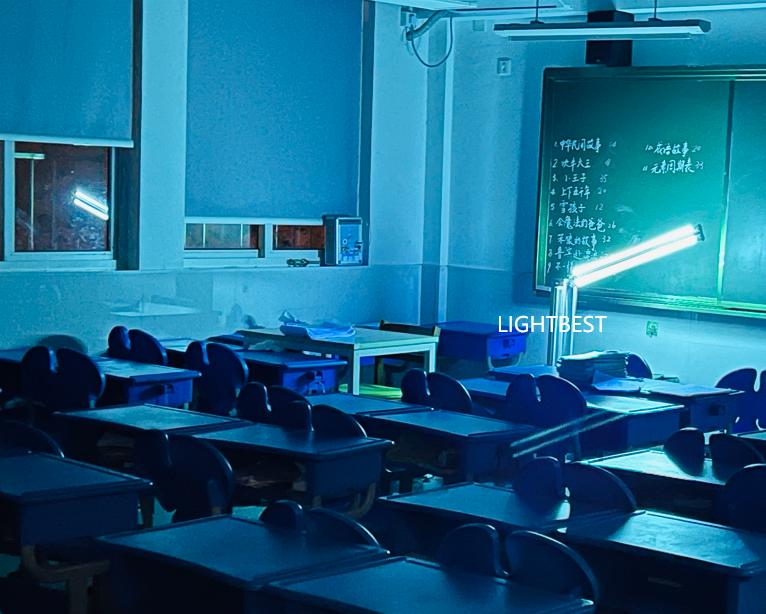UV Lamp reflected by a mirror can still retain some sterilization and disinfection ability, but its effectiveness will be significantly reduced depending on the mirror’s material and reflection efficiency.
Relationship Between Reflection Efficiency and Sterilization Effect
1. Ordinary Mirrors: Ordinary mirrors are usually composed of glass and a reflective layer of mercury (or aluminum). Sunlight must pass through the glass, be reflected by the mercury, and then pass back through the glass. During this process, the glass absorbs and blocks part of the ultraviolet rays, especially the UV-B (280–320 nm) and UV-C (100–280 nm) bands that are critical for sterilization. Experiments show that ultraviolet light reflected by ordinary mirrors may retain only about 50% of its original intensity, resulting in a significant reduction in sterilization effectiveness.
2. High-Reflectivity Materials: When using specialized reflective surfaces coated with aluminum or silver (such as 430 stainless steel commonly used for the inner walls of UV disinfection cabinets), the reflection efficiency is much higher, reducing UV losses. These materials can increase the irradiation dose by 40%–80%, and in some cases even expand the coverage area through reflection, thereby enhancing sterilization performance. However, such mirrors are more costly and less common in everyday environments.
Core Mechanism of Ultraviolet Sterilization
Ultraviolet sterilization mainly relies on the UV-C band, which can destroy the molecular structure of microbial DNA or RNA, leading to cell death. Among them, UV light at a wavelength of 253.7 nm has the strongest germicidal effect. However, ultraviolet light has very weak penetration ability and can only kill microorganisms directly exposed to it. If the intensity of the reflected UV light is insufficient or its distribution is uneven, the sterilization effect will be further limited.
Limiting Factors in Practical Applications
1. Environmental Interference: Dust, organic matter (such as blood or secretions), and other contaminants can absorb or block ultraviolet rays, thereby reducing sterilization efficiency. Even if the reflected UV light has sufficient intensity, surfaces contaminated with debris must be cleaned before disinfection.
2. Microbial Resistance:Some bacteria and viruses exhibit resistance to ultraviolet radiation or can form protective biofilms, requiring higher doses or longer exposure times for effective inactivation.
3. Reflection Uniformity:Ordinary mirrors may have uneven surfaces, causing the reflected light to scatter and lowering the local intensity of ultraviolet radiation, which reduces sterilization effectiveness.

Optimization Suggestions
If reflected ultraviolet light is to be used for sterilization, the following measures can be taken:
lChoose high-reflectivity materials: Use specialized aluminum- or silver-coated reflectors to minimize UV loss.
lControl environmental factors: Keep the irradiated surfaces clean to reduce interference from dust and organic matter.
lExtend exposure time: Compensate for the reduced intensity caused by reflection to ensure the required UV dose is achieved.
lCombine with other disinfection methods: For example, ozone or chemical disinfectants can be used to improve overall sterilization effectiveness.
Post time:2025-08-19 13:58:21

